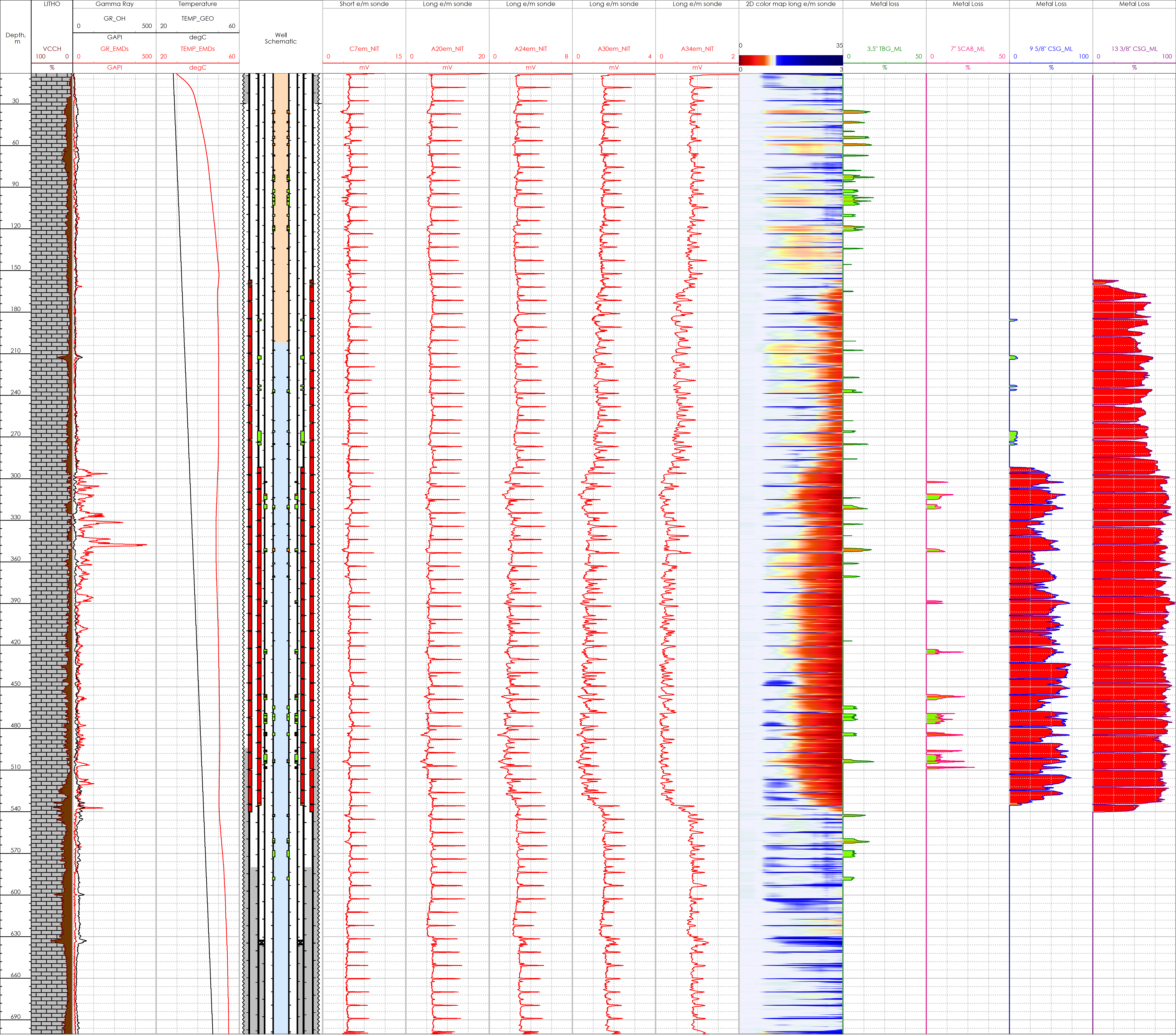Integrity Challenge
Ensuring a strong cement bond in the annulus is crucial and one of the effective methods to achieve this is by utilizing a multistage packer and ensuring proper centralization. Additionally, an external coating on the inner pipe can reduce the risk of corrosion migration from the outer pipe to the inner pipe. This becomes particularly critical when the outer pipe had a poor cement job with little or no cement while being exposed to a corrosive aquifer. The potential failure of multiple barriers in this scenario can have severe consequences, including the occurrence of an oil leak to the surface. These leaks can result in harm to personnel, the environment, the asset and the reputation of the company.
Corrosion Logging Result
One example when corrosion logging was conducted, and multi barrier metal loss is shown below:
The well was drilled in 1988 as a vertical beam pump (BP) oil producer. After drilling the well was completed with a 13 3/8” surface casing, a 9 5/8” cemented intermediate casing and a 7” production liner.
In 2000 during a workover, a whipstock was set in the 9 5/8” casing at 750 m. The 9 5/8” casing was milled out to 730 m. A horizontal sidetrack was drilled through the milled window. The sidetrack was completed with a 7” intermediate liner and 4.5” wire wrapped screens (WWS) across the openhole reservoir section to minimize sand production into the well.
In 2007 during a workover the 9 5/8” casing was unsuccessfully pressure tested and a 7” scab liner was run from surface to the top of the 7” intermediate liner. A new 3.5” beam pump (BP) completion string was run.
In 2012 the well was converted to a 3.5” ESP completion.
In 2018 a subsurface integrity test (SIT) was conducted and both the B and C annuli failed to test.
In 2021 EMDs corrosion log was conducted. The log data indicated the presence of an extended interval of severe metal loss in the 13 3/8” casing from 156-540 m with a maximum metal loss of 100%. Corrosion had migrated to the 9 5/8” casing at 290-530 m, the maximum metal loss in the 9 5/8” casing was 75%. Corrosion from the 9 5/8” casing had migrated to the 7” scab liner with a maximum metal loss of 30%. In addition, there were multiple intervals of corrosion in the completion string with maximum metal loss less than 20%. However, the shape of the recorded curves indicated the presence of through wall defects i.e. holes in the completion string.
The shape of the temperature curve showed crossflow at an interval which is aligned with the metal loss in the 13 3/8” casing.
Taking into consideration the status of all the pipes, it was decided to abandon this well.
All case studies
Looking for more information?
Get in touch with us and our representative will get back to you
Contact Us



